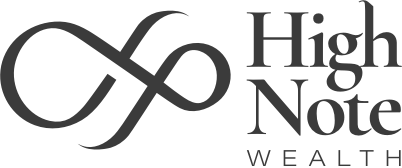Happy Fri-YAY, all! Welcome to October and the first day of the last quarter of 2021…also known as COVID Year 2. It’s going to be with us indefinitely it
seems, but here’s to hoping that most of the damage is in the rearview mirror.
First, massive thanks and shouts out to all the well-wishers on the arrival of Baby Boy MJ. Little man and mom are continuing to do well. That said, the world of financial news doesn’t stop for anything, so let’s get into it.
September has had all sorts of financial news and narrative tributaries. Some potentially good, some potentially bad, and the usual red herrings. The market movement has been schizophrenic trying to process the information with mixed results – indexes off all-time highs and interest rates up, but not a ton of drama given the issues on the table. Instead of diving into the updates in long-form, we are going to break it down into individual bullet points as the overall thesis still seems undetermined.
Stocks: Stocks sank the past couple of weeks for a variety of reasons. The good news is that it has been a slight correction without being a real correction, if that makes sense. Some of the factors in play are the current high valuations, demanding profit expectations, interest rates increasing and noise from China on a major property developer being on shaky ground. As a collection, they have applied some pressure on stocks, but nothing to get excited about at this point. The longer we go with stocks just hanging here the less likely we are to have a 10% correction – revenue and earnings will catch up.
Bonds: The Federal Reserve met a week ago and mainly reported a nothing
burger. The plan remains in place with the announcement that tapering may soon be necessary. Duh. That’s well known, and the real news won’t even be “when” but “how fast.” Our guess is somewhere between SLOW and SLOWER. Interest rates did move up which pushes bond prices lower in the short term but increases yields in the long run. As we have joked before, they have to get rates up now so they can quickly take them down at the first sign of trouble.
Left Fighting the Left: As Democrats move to get President Biden’s
infrastructure bill passed, they aren’t on the same page – and not even really close at this point. The more progressive lean of the party thinks that Biden’s plan is too small and given their slight majority, there isn’t room for them to not all be in the same boat. They are going to have to come to some sort of an agreement to not submarine the whole thing.
New Pill: Merck is fast-tracking FDA approval for an oral COVID treatment. Think about the benefits of Regeneron’s monoclonal antibodies without having to sit for an IV drip. It won’t prevent the transmission but will
prevent hospitalizations and fatalities. You can read more here. This could be particularly helpful for the unvaxxed population and the overall re-open story.
High Note Quick Hits
The Big Lie About Taxes (editorial):
We know that the tone of some lawmakers has turned aggressive with the mantra of “tax the rich.” In fact, a congresswoman even had those words on her dress while attending the Met Gala. Progressive tax tables have more or less always been a thing in America, but turning the quip into a stump speech catchphrase and Twitter hashtag is new. The irony of that idea realized in proposed tax changes is too much to handle.
Case in point, we have been reporting that lawmakers seem to be drawing a line in the sand that $400k of salary per year is the magic number that determines if you are rich. Above that number, proposals are being tossed around to get very aggressive. Funny enough, a partnership couple of U.S. congressmen/congresswomen make around $380k a year and the Presidential salary is $400k. Coincidence, we are sure.
It’s a lot of money in Laramie, Wyoming, or Jackson, Mississippi, but not in New York or San Francisco. The truly rich in this country make $400k A DAY. Many in that nosebleed level of income do so by working in industries that are able to take advantage of a tax-deferral concept called carried-interest (hedge funds and private equity partners). In the grand scheme of things, the
number in this category is quite small, and removing the carried-interest strategy certainly would pay off the deficit. But symbolically, if you were truly a believer in a progressive tax system and “taxing the rich,” that seems like an easy and logical place to start. Well, guess what? In the last round of Biden tax change proposals, carried-interest reform is mysteriously missing. Off the docket. [Insert Venn diagram showing “tax saved by carried interest” intersecting with “contributions to Super PACs”]. That $400k a day buys a lot of influence in D.C., clearly.
If that’s not enough to make the point, a few of Our Dear Leaders have proposed a change to the taxation of ETFs (exchange-traded funds). We use a lot of ETFs in our portfolios for a variety of reasons – low fees, full transparency, diversification, and tax treatment. The original tax structure of ETFs was put forward to help the little guy because the truly wealthy could always do this on their own. To allow every investor, particularly the small investor, the ability to get broad exposure without being subject to onerous taxes and fees. Now that they have been widely adopted across the industry, it’s an odd choice, particularly when considered with the carried-interest discussion above. It shows how out-of-touch lawmakers are about wealth creation if you are being generous, or how much influence money buys for the more cynical among us.
After this idea was proposed, the investment industry and its lobbyists jumped to action. Ultimately, it feels like a stretch for the proposal to make it to law but it’s a telling look into the minds of those making tax law. We will be following the tax changes very closely and are ready to act on any changes to the investment landscape.
Co-Authored by Martin Banks

